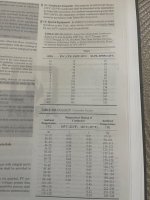Jpflex
Electrician big leagues
- Location
- Victorville
- Occupation
- Electrician commercial and residential
I have noticed that safety training for my new job focuses on NFPA 70E rather than NEC. I do see some contradictions or conflicts between the two.
In NEC 690.31 A 2 it is stated that where wires are not guarded and operating at voltages GREATER THAN 30 volts that are readily accessible to unqualified persons, shall be installed in type mc cable, multi conductor cable or in a raceway.
However, our job is safety training employees according to OSHA and NFPA which says that exposed wires accessible to unqualified personnel must be guarded with such raceways or barriers if voltages are at 50 volts or more as opposed to NEC at 30 volts?
I understand it’s wise to follow company policy but it appears some NFPA rules may pose a violation to NEC rules which also must be followed, so what do you do?
Also, the other topic regards NEC 690.31 A 3 for conductors ampacity rated at 105 and 125 degrees celcius to use table 690.31 A31
Does this section mean that the insulation for these pv wires are rated for the ampacity shown on this table for those temperatures and if so how could you use or size these wires for typical terminations for equipment limited to the 60 or 75 degree celcius?
In NEC 690.31 A 2 it is stated that where wires are not guarded and operating at voltages GREATER THAN 30 volts that are readily accessible to unqualified persons, shall be installed in type mc cable, multi conductor cable or in a raceway.
However, our job is safety training employees according to OSHA and NFPA which says that exposed wires accessible to unqualified personnel must be guarded with such raceways or barriers if voltages are at 50 volts or more as opposed to NEC at 30 volts?
I understand it’s wise to follow company policy but it appears some NFPA rules may pose a violation to NEC rules which also must be followed, so what do you do?
Also, the other topic regards NEC 690.31 A 3 for conductors ampacity rated at 105 and 125 degrees celcius to use table 690.31 A31
Does this section mean that the insulation for these pv wires are rated for the ampacity shown on this table for those temperatures and if so how could you use or size these wires for typical terminations for equipment limited to the 60 or 75 degree celcius?


